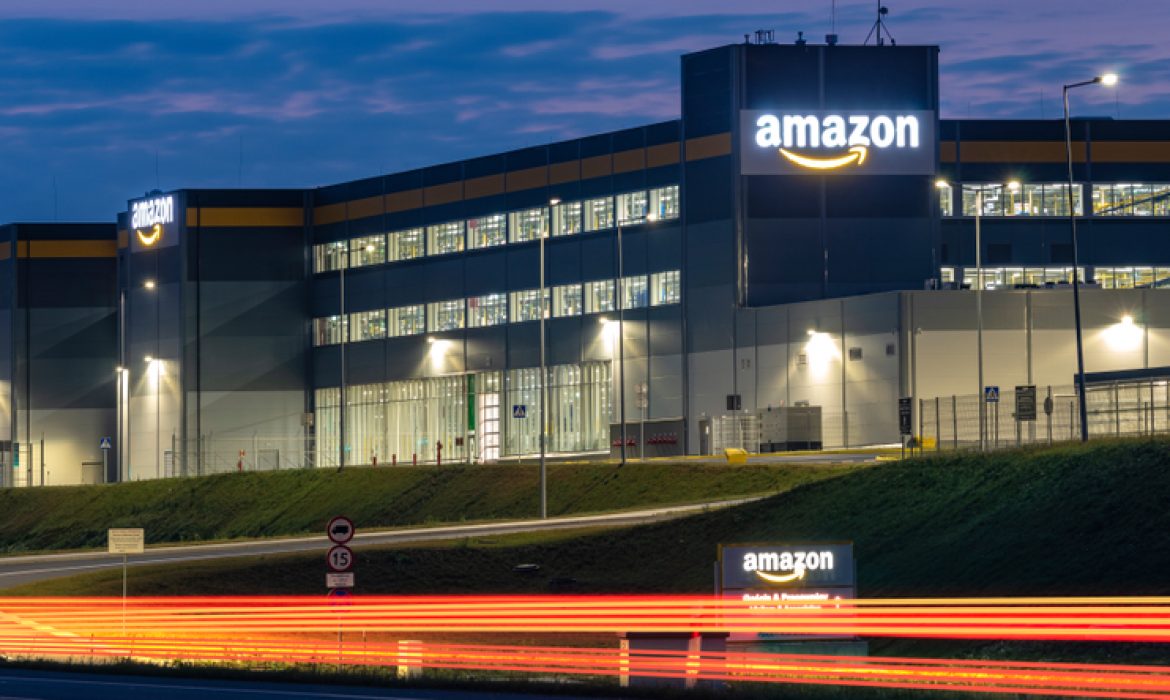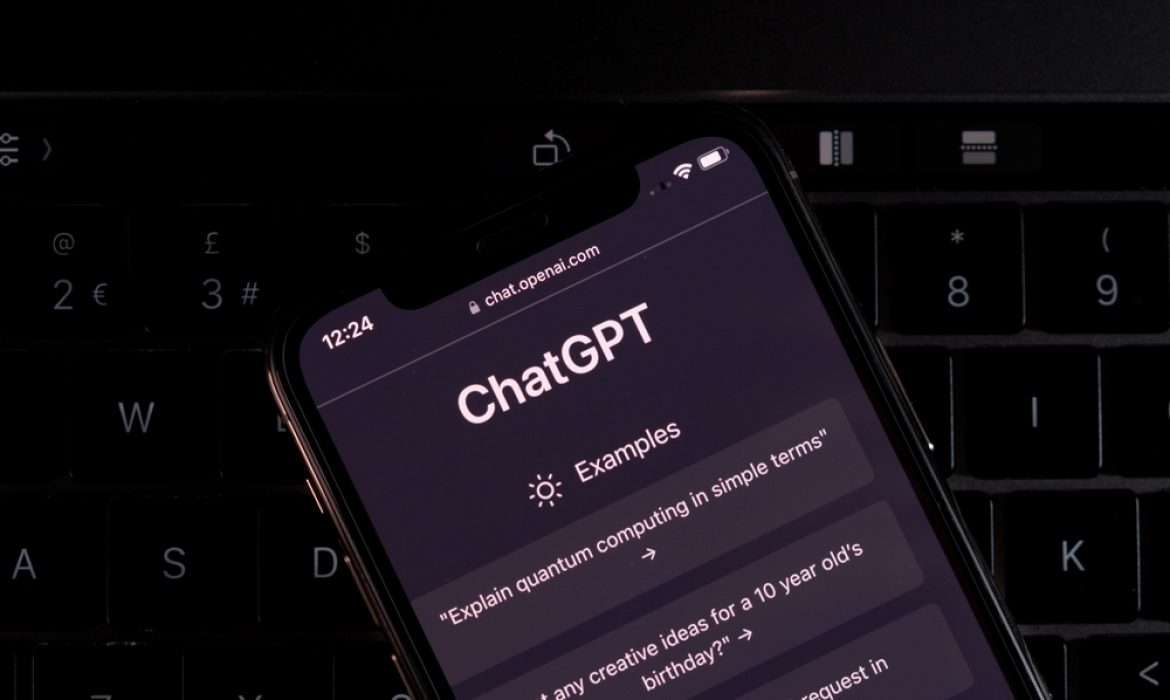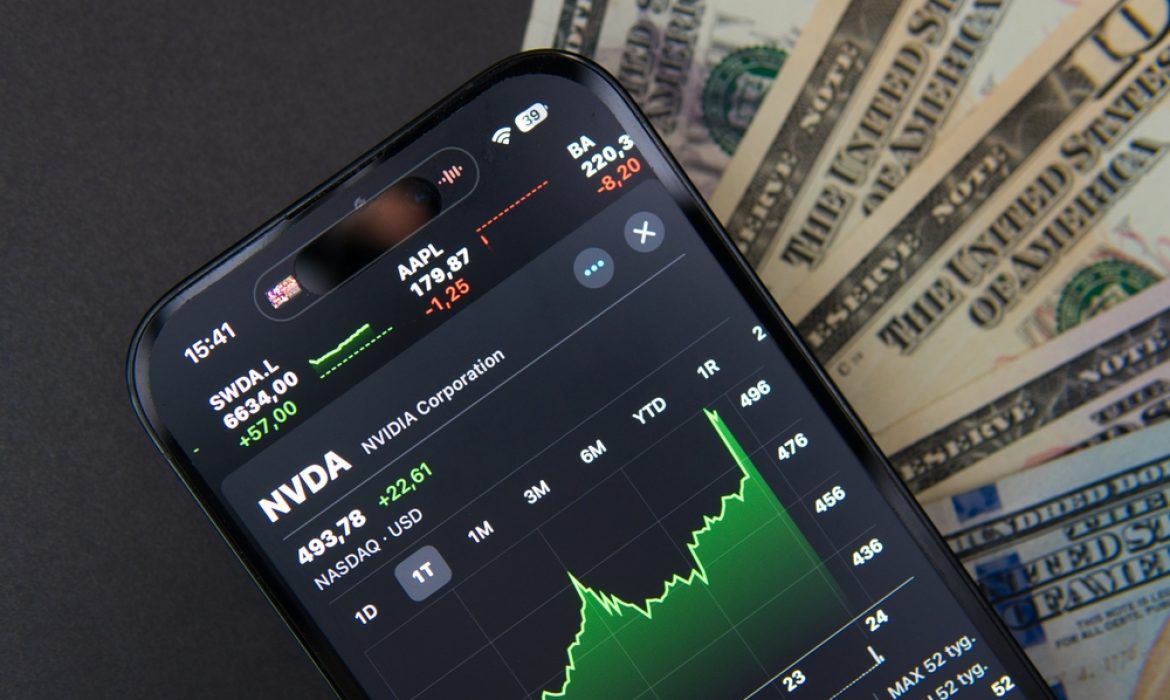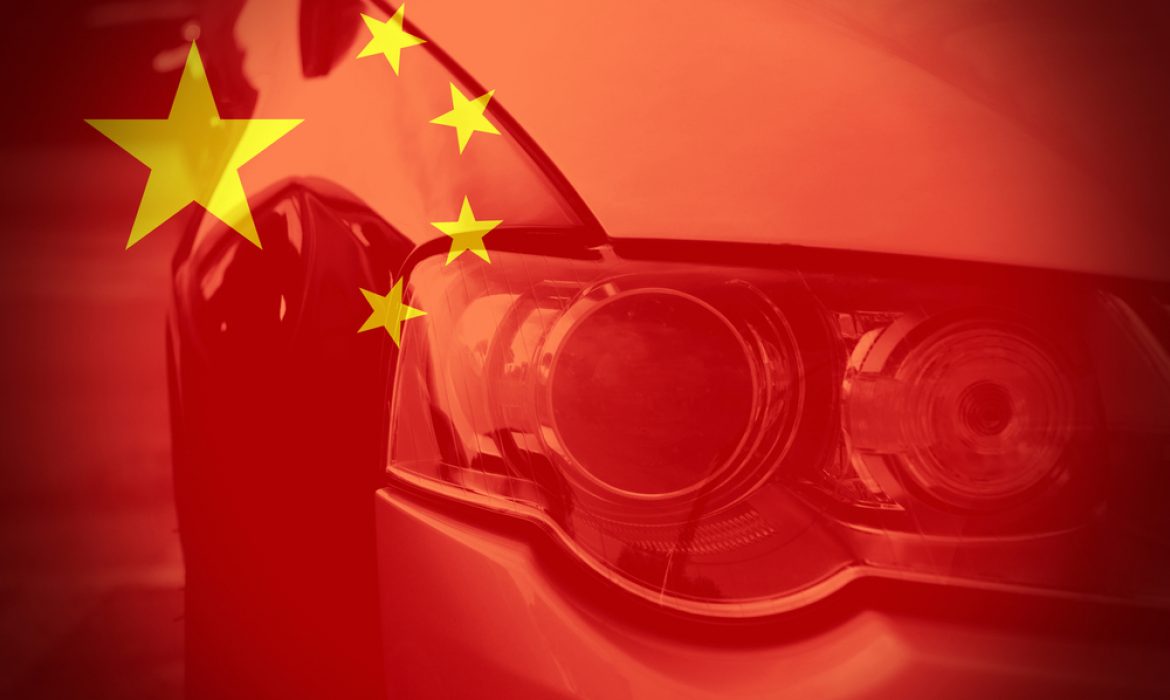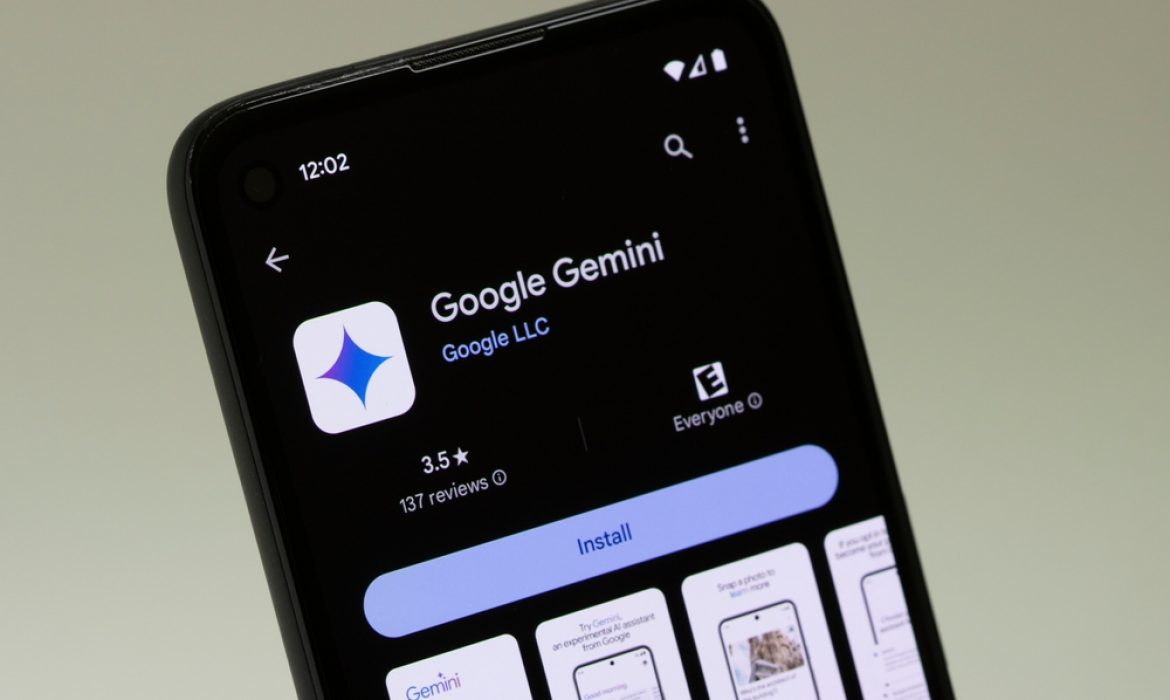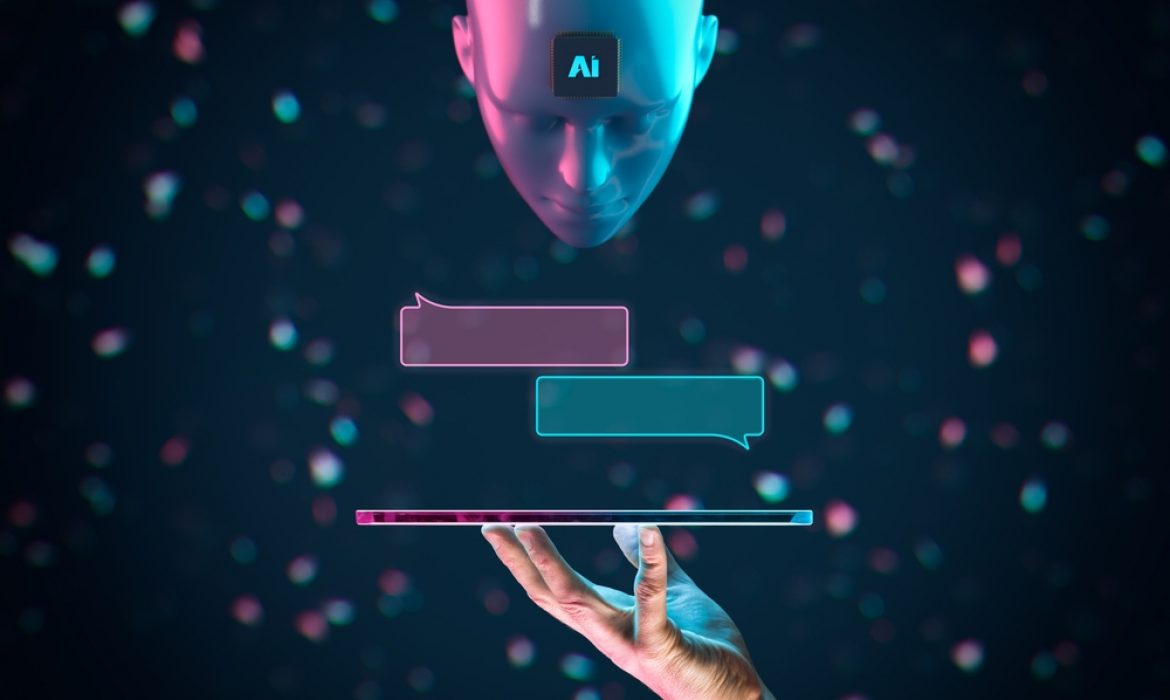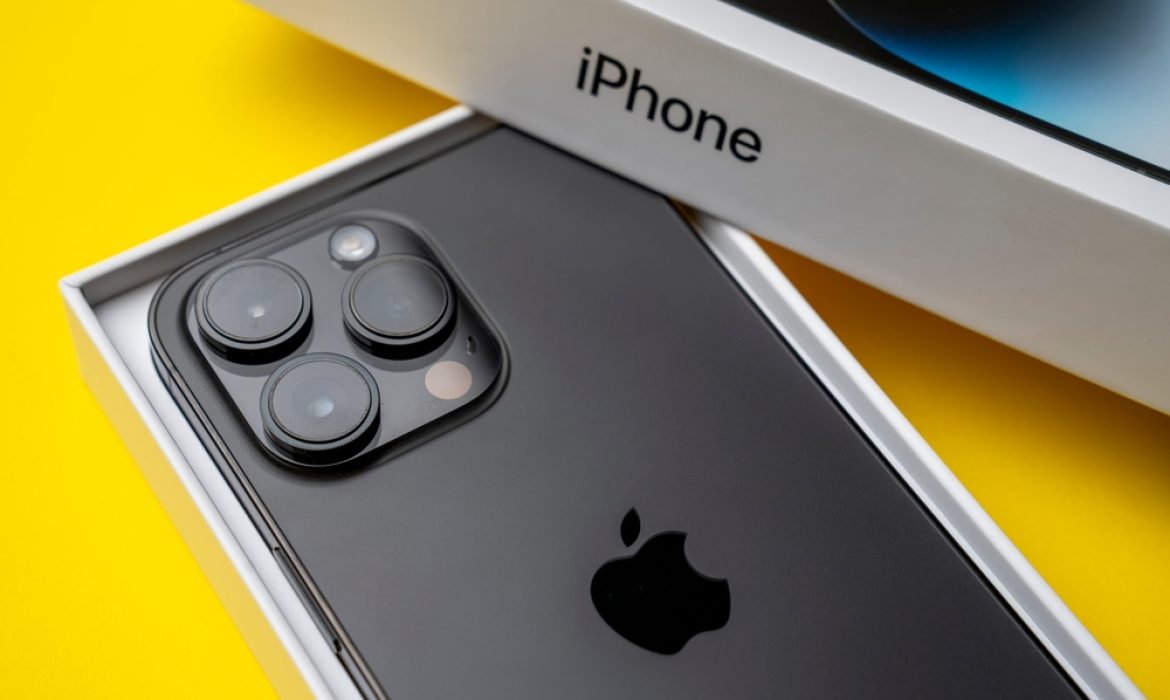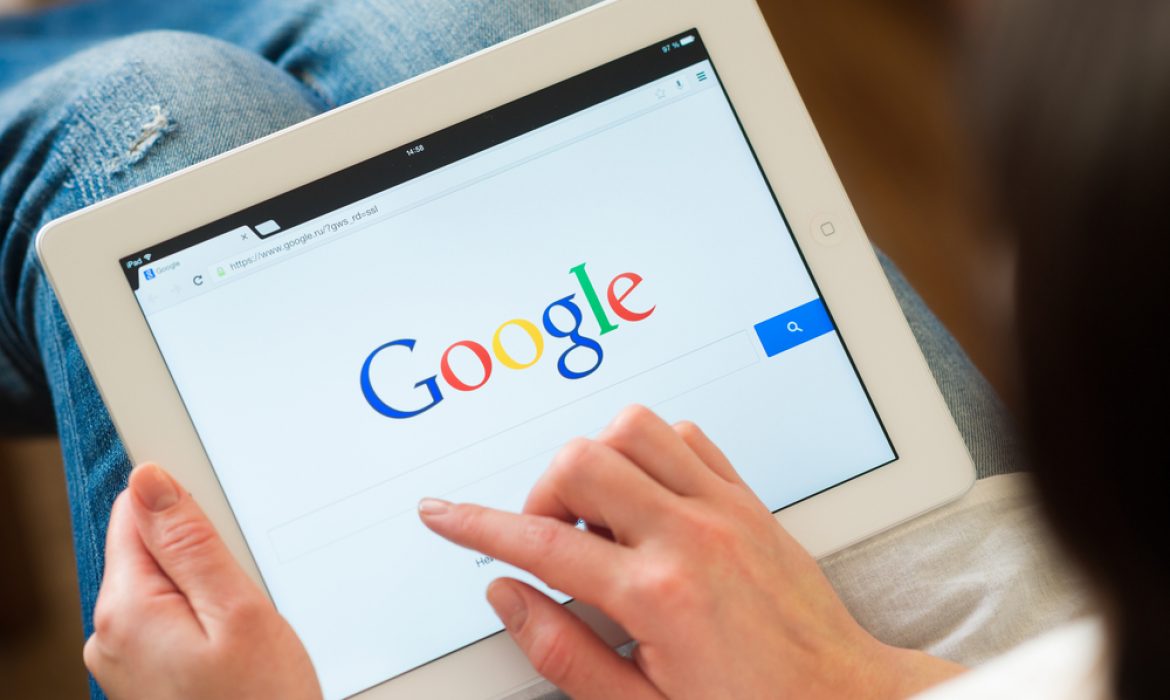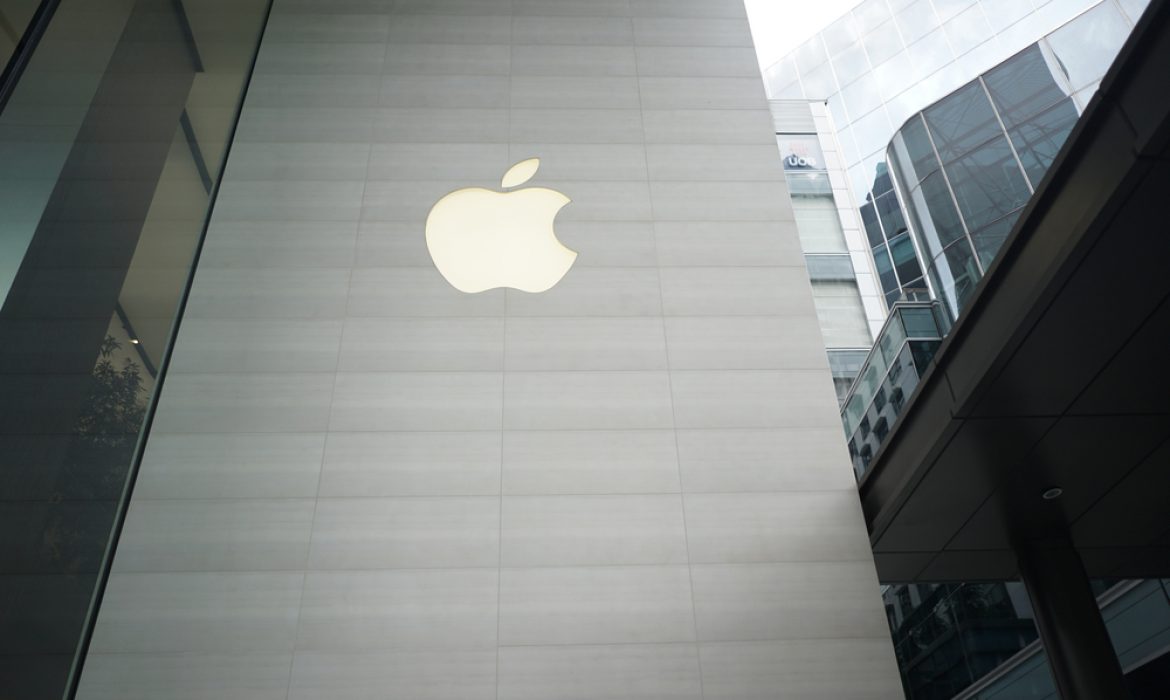Amazon Integrates Grubhub Food Delivery Service into Its Platform
Amazon.com has announced a significant enhancement for its U.S. customers: they can now order from Grubhub directly through Amazon’s shopping app and website. This integration builds upon an existing deal that provides Amazon Prime members with no-fee access to Grubhub+ membership.
As part of the updated agreement, Amazon Prime members will continue to enjoy the benefits of a free Grubhub+ membership, valued at $120 per year. This membership includes perks like free delivery on orders over $12. The partnership initially began in 2022, offering U.S. Prime members complimentary access to Grubhub. The companies extended this arrangement in 2023, and the latest deal further solidifies this collaboration by embedding Grubhub services directly within Amazon’s digital ecosystem.
“Prime members will have uninterrupted access to Grubhub+ every year thereafter as long as they remain with Prime,” Amazon stated. This seamless integration aims to enhance the value of Prime membership, which costs $139 annually and already offers a plethora of benefits including free delivery, gaming perks, discounts on medical prescriptions, and access to Amazon Music, Prime Video, and Prime Reading.
In addition to these membership benefits, Amazon had secured rights to purchase a 2% stake in Grubhub in July 2022. Just Eat Takeaway, Grubhub’s parent company, has disclosed that Amazon has received warrants representing 4% of Grubhub’s equity and could obtain additional warrants for up to 10% of the equity, contingent upon certain performance metrics.
The strategic move by Amazon to integrate Grubhub is also seen as a potential booster for Grubhub’s attractiveness to prospective buyers. “The important impact of this deal is that it makes GrubHub more attractive to a potential buyer, as Just Eat Takeaway has been attempting to sell it for some time now – since shortly after it made the initial acquisition,” noted Sean Kealy, an analyst at Panmure Gordon.
With about 167 million U.S. customers subscribed to Amazon Prime in 2023, accounting for approximately 71% of all users in the country, this integration significantly expands Grubhub’s reach and potential customer base.
The seamless incorporation of food delivery into Amazon’s platform is a notable development in the e-commerce giant’s strategy to offer a comprehensive range of services under one roof.
For more details, read the full article on Reuters.
OpenAI’s $250 Million Deal with News Corp Sparks Debate on AI and Copyright
OpenAI has entered into a five-year agreement with News Corp, which could be worth up to $250 million. This deal comes at a time when tech giants like Microsoft, OpenAI, and Google are under intense scrutiny for using copyrighted content without consent to train their AI models.
According to The Wall Street Journal, this landmark agreement allows OpenAI to access a vast array of current and archived content from News Corp’s extensive portfolio. Publications such as The Wall Street Journal, the New York Post, the Times, the Sunday Times, Barron’s, and MarketWatch will be part of this content integration. OpenAI aims to enhance its AI models, particularly ChatGPT, by incorporating this high-quality news content.
News Corp will also contribute journalistic expertise to ensure the highest standards of journalism are maintained across OpenAI’s offerings. This partnership underscores a significant collaboration between technology and traditional media, aiming to benefit both sectors.
However, it remains unclear whether the agreement includes editorial or opinion content and whether this content will be part of ChatGPT’s paid model (GPT-4) or the publicly available free iteration.
In recent months, OpenAI has secured similar deals with other media companies, including The Associated Press, Axel Springer in Germany, Prisa Media in Spain, France’s Le Monde, and the Financial Times. Additionally, OpenAI has extended its reach beyond mainstream media by striking content deals with social media platforms like Reddit.
These licensing agreements primarily allow ChatGPT to access and use content for training purposes, enabling the AI to generate more accurate and contextually appropriate responses. However, the News Corp deal stands out as it explicitly allows OpenAI to use news content to answer user questions, potentially reshaping how users interact with AI for news consumption.
In a press statement, OpenAI CEO Sam Altman highlighted the transformative potential of this agreement, describing it as a pivotal moment for both journalism and technology. He emphasized that integrating high-quality journalism into AI models could enhance the value and accuracy of AI-generated content.
Despite these advancements, issues surrounding data ownership and copyright remain contentious. The New York Times has taken a firm stand by suing OpenAI and Microsoft for allegedly using its paywalled content without permission. This lawsuit underscores the ongoing debate over the ethical and legal implications of using copyrighted material to train AI models.
The impact of the News Corp deal on its journalists and editors is another area of concern. According to a report in The Guardian, layoffs are expected at News Corp next week, raising questions about the broader implications of such tech-media partnerships on employment within traditional news organizations.
As the boundaries between AI and media continue to blur, the collaboration between OpenAI and News Corp represents a significant step forward. However, it also highlights the need for careful navigation of legal, ethical, and employment-related challenges in this rapidly evolving landscape.
For more details on the deal, visit the original source here.
Jensen Huang’s Net Worth Soars: Nvidia’s AI Leadership Fuels Massive Wealth Surge
Nvidia CEO Jensen Huang’s net worth has skyrocketed from $3 billion to an astounding $90 billion over the past five years. Huang’s wealth surged by over $7 billion on Thursday alone, driven by a meteoric rise in Nvidia’s stock price.
Huang owns approximately 86.76 million shares of Nvidia, translating to a stake valued at over $90 billion. Nvidia’s shares have increased almost 28-fold in the past five years, reflecting the company’s explosive growth and dominance in the technology sector.
On Wednesday, Nvidia reported first-quarter earnings that exceeded expectations, with sales soaring more than 200% for the third consecutive quarter. This impressive performance is primarily fueled by the burgeoning demand for artificial intelligence (AI) processors. Huang’s optimistic forecast further bolstered investor confidence, highlighting the sustained high demand for Nvidia’s AI graphics processing units (GPUs). He emphasized the transformative impact of Nvidia’s technology on computing.
“We are fundamentally changing how computing works and what computers can do,” Huang stated during the earnings call.
Huang’s investment in Nvidia has been strategic. He increased his holdings in 2022 when the stock was at a relative low, ahead of the AI boom. His vision and leadership have been instrumental in steering Nvidia to its current position as a leader in AI technology.
Founded in 1993 by Huang, Nvidia initially focused on GPUs for 3D gaming. Over the years, the company expanded into other markets, including cloud gaming, the metaverse, and cryptocurrency mining. However, Nvidia’s fortunes took a dramatic turn in late 2022 with the advent of generative AI, epitomized by OpenAI’s ChatGPT.
OpenAI’s reliance on Nvidia GPUs for its AI development set the stage for Nvidia’s current dominance. As tech giants like Microsoft, Google, and Meta ramped up their AI investments, the demand for Nvidia’s advanced AI chips soared. This surge positioned Nvidia as the leading supplier, commanding about 80% of the AI chip market.
Huang’s role has been pivotal not just as a CEO but as the primary advocate and visionary for Nvidia’s potential in AI. His persistent promotion of Nvidia’s GPUs’ capabilities has solidified the company’s reputation and market share.
With Nvidia’s continued development in AI software and tools, the company remains at the forefront of technological innovation. Huang’s financial success mirrors Nvidia’s ascendancy, making him one of the world’s wealthiest individuals.
For more details, visit the full article on CNBC.
Biden Hits China with Heavy Tariffs on Electric Cars and Solar Panels, Citing Unfair Practices
US President Joe Biden is intensifying tariffs on Chinese-made electric cars, solar panels, steel, and other goods. The White House stated that the measures, which include a 100% border tax on electric cars from China, are a response to unfair policies and aimed at protecting US jobs. China has expressed opposition to the hikes and promised retaliatory measures.
Analysts believe the tariffs are largely symbolic and intended to shore up votes in a challenging election year. They follow months of criticism from former President Donald Trump, who is running for the White House against Biden and has argued that his rival’s support for electric cars would “kill” the US car industry.
Biden vowed not to let China “unfairly control the market” for electric vehicles and other key goods, including batteries, computer chips, and essential medical supplies. “If the pandemic taught us anything, we need to have a secure supply of essentials here at home,” he said. The tariffs announced on Tuesday will impact an estimated $18 billion worth of imports, according to the White House.
In addition to the 100% tariff on electric vehicles, levies on solar cells will rise from 25% to 50%. Tariff rates on certain steel and aluminum products will more than triple to 25%, up from 7.5% or less. In response, China’s commerce ministry warned that the new moves would “severely affect the atmosphere for bilateral cooperation” and criticized what it sees as the politicization of economic issues. A spokesperson for China’s foreign ministry declared that China would “take all necessary measures to safeguard its legitimate rights and interests.”
During the Biden administration’s review of these measures, the government received nearly 1,500 comments, mostly from business owners arguing that the tariffs were driving up prices for everyday Americans and requesting their removal. However, Biden’s decision to expand the tariffs into new areas, even as persistent US inflation weighs on his approval ratings, highlights a dramatic shift in trade views for both political parties in the US, which had long championed the benefits of global commerce.
Wendy Cutler, a former US trade official, stated that Americans are willing to accept higher-priced cars in exchange for protecting US companies and jobs.
“We’ve seen this movie before – with solar, with steel and [aluminum], and when it comes to cars and other products, the United States needs to get ahead of the curve,” she said.
White House officials denied that domestic politics influenced the decision, citing ongoing harmful practices by Beijing, including rules that force Western companies to share information and subsidies that allow Chinese firms to produce beyond demand. “They’re flooding the market,” Biden said. “It’s not competing – it’s cheating.” The White House said the tariffs were targeted and not expected to stoke inflation, contrasting their approach with that of Trump.
The former president, who once called himself a “tariff man,” has campaigned on a proposed across-the-board 10% tariff on foreign imports, potentially rising to 60% for goods from China. He has also attacked Biden for promoting electric vehicles, arguing that this will destroy US car companies, key employers in states like Michigan, crucial election battlegrounds in November.
Erica York, senior economist at the Tax Foundation, noted that both candidates are heading down the same path of higher trade barriers. She said the administration’s promotion of the tariffs as strategic was a “euphemism for protection for sectors that are politically important for this administration.”
While the US already imposes steep tariffs on Chinese-made electric vehicles, making sales negligible, Washington has been wary of increasing sales by Chinese companies in Europe and other countries. White House officials stressed that ensuring green technologies are not dominated by a single country is critical for a successful and sustainable transition.
For further details, visit BBC Business News.
Google I/O 2024: New Gemini AI Models, Android 15 Updates, and More
At the end of I/O, Google’s annual developer conference at the Shoreline Amphitheater in Mountain View, Google CEO Sundar Pichai revealed that the company had said “AI” 121 times. That, essentially, was the crux of Google’s two-hour keynote — stuffing AI into every Google app and service used by more than two billion people around the world. Here are all the major updates from Google’s big event, along with some additional announcements that came after the keynote.
Gemini 1.5 Flash and Updates to Gemini 1.5 Pro
Google announced a brand new AI model called Gemini 1.5 Flash, which it says is optimized for speed and efficiency. Flash sits between Gemini 1.5 Pro and Gemini 1.5 Nano, which is the company’s smallest model that runs locally on device. Google said that it created Flash because developers wanted a lighter and less expensive model than Gemini Pro to build AI-powered apps and services while keeping some of the features like a long context window of one million tokens that differentiates Gemini Pro from competing models. Later this year, Google will double Gemini’s context window to two million tokens, enabling it to process two hours of video, 22 hours of audio, more than 60,000 lines of code, or over 1.4 million words simultaneously.
Project Astra: Google’s Universal Assistant
Google showed off Project Astra, an early version of a universal assistant powered by AI that Google’s DeepMind CEO Demis Hassabis said was Google’s version of an AI agent “that can be helpful in everyday life.”
In a video that Google says was shot in a single take, an Astra user moves around Google’s London office holding up their phone and pointing the camera at various objects — a speaker, some code on a whiteboard, and out a window — and has a natural conversation with the app about what it sees. In one of the video’s most impressive moments, Astra correctly tells the user where she left her glasses without the user ever mentioning the glasses.
The video ends with a twist — when the user finds and wears the missing glasses, we learn that they have an onboard camera system capable of using Project Astra to seamlessly carry on a conversation with the user, perhaps indicating that Google might be working on a competitor to Meta’s Ray-Ban smart glasses.
AI Enhancements in Google Photos
Google Photos was already intelligent when it came to searching for specific images or videos, but with AI, Google is taking things to the next level. If you’re a Google One subscriber in the US, you will be able to ask Google Photos a complex question like “show me the best photo from each national park I’ve visited” when the feature rolls out over the next few months. Google Photos will use GPS information as well as its own judgment of what is “best” to present you with options. You can also ask Google Photos to generate captions to post the photos to social media.
Veo and Imagen 3: AI-Powered Media Creation Engines
Google’s new AI-powered media creation engines are called Veo and Imagen 3. Veo is Google’s answer to OpenAI’s Sora. It can produce “high-quality” 1080p videos that can last “beyond a minute,” Google said, and can understand cinematic concepts like a timelapse.
Imagen 3, meanwhile, is a text-to-image generator that Google claims handles text better than its previous version, Imagen 2. The result is the company’s highest quality text-to-image model with “incredible level of detail” for “photorealistic, lifelike images” and fewer artifacts — essentially pitting it against OpenAI’s DALL-E 3.
AI Overviews and New Search Features
Google is making big changes to how Search fundamentally works. Most of the updates announced today, like the ability to ask really complex questions (“Find the best yoga or Pilates studios in Boston and show details on their intro offers and walking time from Beacon Hill”) and using Search to plan meals and vacations, won’t be available unless you opt into Search Labs, the company’s platform that lets people try out experimental features.
But a big new feature that Google is calling AI Overviews, which the company has been testing for a year now, is finally rolling out to millions of people in the US. Google Search will now present AI-generated answers on top of the results by default, and the company says that it will bring the feature to more than a billion users around the world by the end of the year.
Android 15 Integration and Anti-Theft Features
Google is integrating Gemini directly into Android. When Android 15 releases later this year, Gemini will be aware of the app, image, or video that you’re running, and you’ll be able to pull it up as an overlay and ask it context-specific questions. Where does that leave Google Assistant that already does this? Who knows! Google didn’t bring it up at all during today’s keynote.
Android 15’s developer preview may have been rolling for months, but there are still features to come. Theft Detection Lock is a new Android 15 feature that will use AI to predict phone thefts and lock things up accordingly. Google says its algorithms can detect motions associated with theft, like those associated with grabbing the phone and bolting, biking, or driving away. If an Android 15 handset pinpoints one of these situations, the phone’s screen will quickly lock, making it much harder for the phone snatcher to access your data.
WearOS 5 Battery Life Improvements
Google isn’t quite ready to roll out the latest version of its smartwatch OS, but it is promising some major battery life improvements when it comes. The company said that Wear OS 5 will consume 20 percent less power than Wear OS 4 if a user runs a marathon. Wear OS 4 already brought battery life improvements to smartwatches that support it, but it could still be a lot better at managing a device’s power. Google also provided developers with a new guide on how to conserve power and battery, so that they can create more efficient apps.
Additional Announcements
There were a bunch of other updates too. Google said it would add digital watermarks to AI-generated video and text, make Gemini accessible in the side panel in Gmail and Docs, power a virtual AI teammate in Workspace, listen in on phone calls and detect if you’re being scammed in real-time, and a lot more.
For more details on the announcements, visit Engadget.
“Godfather of AI” Proposes Universal Basic Income Amid Job Fears
The renowned figure in Artificial Intelligence (AI), Geoffrey Hinton, believes that the implementation of a universal basic income (UBI) could alleviate concerns surrounding job scarcity triggered by AI advancements.
Geoffrey Hinton expressed his apprehensions to the BBC, stating he was “very concerned that a lot of simple robots will be taken over by artificial intelligence.” He further disclosed that he advised Downing Street on the merits of UBI
UBI entails providing regular, equal payments to all citizens, irrespective of income, social status, age, or employment status, without any reciprocal obligations. While some US cities and states have experimented with variations of guaranteed basic income, Hinton’s proposal advocates for a broader, nationwide implementation.
Hinton argues that while AI can enhance productivity and generate wealth, without government intervention, it risks exacerbating income inequality, leaving the wealthy wealthier and displacing the poor.
He advocates for a more cautious approach to AI development, warning that unchecked AI progression could pose an “extinction threat” to humans within the next five to 20 years.
Interestingly, OpenAI CEO Sam Altman is conducting his own UBI experiment, with results anticipated for release soon. Altman has also floated the concept of “universal core computing,” where individuals could receive access to future AI models like GPT-7 instead of cash.
Prior to this announcement, Geoffrey Hinton made headlines by departing Google, citing concerns over AI’s potential for harm as a primary reason. His advocacy for UBI underscores the growing debate around AI’s societal impact and the need for proactive measures to mitigate potential risks.
For further details, read the full article on Business Insider.
Apple Introduces Eye-Tracking to Recent iPhones and iPads: Enhancing Accessibility with Innovative Features
As the world prepares to commemorate Global Accessibility Awareness Day, Apple unveils a comprehensive array of new features designed to enhance accessibility across its range of devices. Among these advancements, the introduction of eye-tracking support for recent models of iPhones and iPads stands out as a groundbreaking innovation, aimed at revolutionizing the way users interact with iOS and iPadOS interfaces.
The standout feature of Apple’s latest announcements is the incorporation of built-in eye-tracking functionality, utilizing the front-facing camera of compatible devices to facilitate seamless navigation without the need for additional hardware. Through a feature called Dwell Control, users can effortlessly browse through apps and menus by simply directing their gaze, with the option to linger on items to make selections. This integration of eye-tracking technology represents a significant step forward in enhancing accessibility for individuals with diverse needs.
Apple’s commitment to inclusivity extends beyond eye-tracking, with the introduction of customizable vocal shortcuts aimed at facilitating hands-free control on iPhones and iPads. Utilizing on-device AI, users can create personalized commands and utterances tailored to their preferences, further enhancing the accessibility of voice-based interactions. Additionally, features such as “Listen for Atypical Speech” demonstrate Apple’s dedication to accommodating diverse speech patterns, ensuring an inclusive experience for all users.
To develop these innovative tools, Apple collaborated with the Speech Accessibility Project at the Beckman Institute for Advanced Science and Technology at the University of Illinois Urbana-Champaign, underscoring the company’s commitment to advancing accessibility in partnership with leading research institutions.
Beyond eye-tracking and vocal shortcuts, Apple is introducing a range of accessibility enhancements across its ecosystem, including haptics in Apple Music for users who are deaf or hard of hearing, and updates to CarPlay aimed at improving accessibility for drivers with disabilities. These updates reflect Apple’s ongoing efforts to make its products more inclusive and accessible to all users.
While specific release dates for these features are yet to be announced, users can expect them to be integrated into upcoming versions of iOS, with further details likely to be unveiled at the upcoming Worldwide Developers Conference (WWDC).
For more information, visit the source.
Google’s Project Astra: AI-Powered Assistance Takes a Leap Forward
Google unveiled Project Astra, a revolutionary AI application that integrates visual and auditory information to assist users in real-time. This innovative technology promises to transform how we interact with our environments, offering capabilities like identifying objects, locating misplaced items, and even recalling things no longer in view.
Project Astra leverages your phone’s camera combined with sophisticated AI to create an intelligent assistant that can recognize and remember various objects in real-time. Google’s DeepMind CEO, Demis Hassabis, emphasized that this development is a significant milestone towards achieving the vision of universal AI agents that provide practical, everyday help.
The teaser video released before the keynote provided a glimpse into Astra’s capabilities. In one demonstration, a user instructed the AI to notify them upon seeing something that produces sound. Astra successfully identified a speaker and described its components when prompted. Its creative prowess was also on display when it generated an alliterative phrase on demand.
Astra’s memory feature is particularly impressive. When asked about the location of the user’s glasses, which were out of frame, Astra accurately recalled that they were on a desk near a red apple. This ability to remember past observations significantly differentiates Astra from other AI tools.
The presentation also hinted at a wearable version of Astra, potentially marking a successor to Google Glass. The wearable device integrates seamlessly with the AI to provide contextual information and suggestions. For instance, Astra recommended adding a cache between the server and database to improve system speed and creatively identified a doodle of cats as “Schrodinger’s cat.”
Hassabis explained that Astra’s sophisticated processing capabilities stem from continuously encoding video frames and integrating video and speech inputs into a cohesive timeline of events.
The AI’s quick response times and enhanced vocal expressions make interactions more natural and conversational, reflecting a major leap in AI development.
While there is no official release date for Project Astra, Google has hinted that some features will be integrated into existing products like the Gemini app later this year. The potential availability of such an advanced assistant on mobile devices and possibly through new wearable technology is an exciting development in the AI landscape.
For more details, visit the source.
Geely Unveils Game-Changing Electric SUV: Galaxy E5 Promises 2000 km Range
The automotive world was electrified as Geely Galaxy pulled back the curtain on its groundbreaking all-electric SUV, the E5. Breaking new ground as the inaugural electric addition to the esteemed Galaxy series, the E5 promises to revolutionize the electric vehicle (EV) market with its impressive specs and futuristic design. The highly anticipated vehicle is slated to hit the market in the second quarter, with an estimated price range of RMB 150,000-200,000 (USD 20,800-27,700).
Intelligent Design and Innovation
The Geely Galaxy E5 is built upon the Geely Electric Architecture (GEA), a marvel derived from the Sustainable Energy Architecture (SEA). GEA boasts the distinction of being the world’s first four-in-one intelligent AI architecture, comprising hardware, system, ecology, and artificial intelligence. With dimensions measuring 4615/1901/1670 mm and a wheelbase of 2750 mm, the E5 exudes an aura of sophistication, complete with a panoramic sunroof, concealed door handles, and sleek 18/19-inch five-spoke wheels.
Futuristic Features
Drawing inspiration from its predecessor, the Geely Galaxy E8, the E5 sports a striking design language characterized by a closed matrix light grille, sharp headlights, and decorative C-shaped vents at the bottom. Meanwhile, the rear boasts an integrated, high-mounted brake light and the iconic through-type taillight package, featuring a captivating wave-shaped light element at its core.
Power and Performance
While official powertrain details remain shrouded in mystery, Geely has tantalized enthusiasts with hints of an 11-in-1 smart electric drive and a Shendun battery. Most notably, the E5 boasts an unprecedented potential range of 2000 km, setting a new benchmark for long-distance travel in the realm of electric vehicles. Geely previously showcased a single-motor variant at China MIIT, boasting a maximum power output of 160 kW and utilizing a lithium iron phosphate battery with a top speed of 175 km/h.
Tech-Savvy Interior
Step inside the E5, and you’ll find yourself immersed in a minimalist marvel. The cabin showcases a dual flat-bottom steering wheel, a head-up display, and a full LCD instrument panel. Anchoring the dashboard is a sizable central control screen, seamlessly integrating the Flyme Auto operating system powered by the cutting-edge 7nm Dragon Eagle-1 chip. Additional features include OTA updates, wireless mobile phone charging, heated/ventilated/8-point massage front seats, and a premium 16-speaker audio system.
The unveiling of the Geely Galaxy E5 marks a significant milestone in the evolution of electric vehicles, heralding a new era of innovation, efficiency, and sustainability. With its unparalleled range and futuristic features, the E5 is poised to redefine the automotive landscape and propel Geely Galaxy to the forefront of the EV revolution.
Apple Unveils New iPad Pros with OLED Displays and Ultra-Thin Design
In a highly anticipated “Let Loose” virtual event on May 7, 2024, Apple announced its latest iPad Pro models, featuring OLED displays, the thinnest designs yet, and enhanced internals. This upgrade comes as a significant leap for Apple’s flagship tablets, offering improved power and versatility in a sleek form factor.
The new iPad Pros mark Apple’s transition to OLED screens, with the 11-inch and 13-inch models benefiting from the rich color saturation, deeper blacks, and higher contrast ratios that OLED technology provides. This change addresses a long-standing request from users and brings greater visual performance, particularly for fans of the smaller 11-inch model. The OLED display allows the iPad Pros to reach 1,000 nits of peak full-screen brightness and up to 1,600 nits for HDR content, making them ideal for media consumption and professional work.
The 13-inch iPad Pro is Apple’s thinnest device ever, measuring just 5.1 millimeters thick, while the 11-inch variant is slightly thicker at 5.3 millimeters. Apple also introduced a nano-texture glass coating for those who prefer a matte display finish, offering reduced glare and enhanced visibility in bright environments.
The new iPad Pros are powered by Apple’s latest M4 chip, providing a significant boost in CPU performance compared to the previous generation’s M2 chip. Apple claims a 50% increase in CPU speed, with the M4 delivering the same performance as the M2 at half the power consumption, thanks to improved efficiency. The thermal performance has also seen a 20% enhancement, allowing the iPad Pro to handle intense workloads with greater stability.
The Magic Keyboard has been redesigned with premium materials, featuring an aluminum palm rest and a new function key row. The Apple Pencil Pro has also received an upgrade, with added features such as squeeze gestures, Find My location tracking, and a gyroscope for more nuanced drawing controls. Haptic feedback has also been introduced to enhance the user experience when using the Apple Pencil Pro.
The new iPad Pros come in two sizes, with base storage of 256GB, priced at $999 for the 11-inch model and $1,299 for the 13-inch variant. They are available for preorder starting today, with in-store availability on May 15th.
Apple’s shift to OLED technology is a major step forward, eliminating the blooming effect often seen with Mini LED displays and providing consistent high-quality visuals across both iPad Pro sizes. This update reinforces Apple’s vision of the iPad Pro as a viable laptop replacement, offering premium performance in a compact and thin design.
For more information about the new iPad Pros and their features, check out The Verge.
